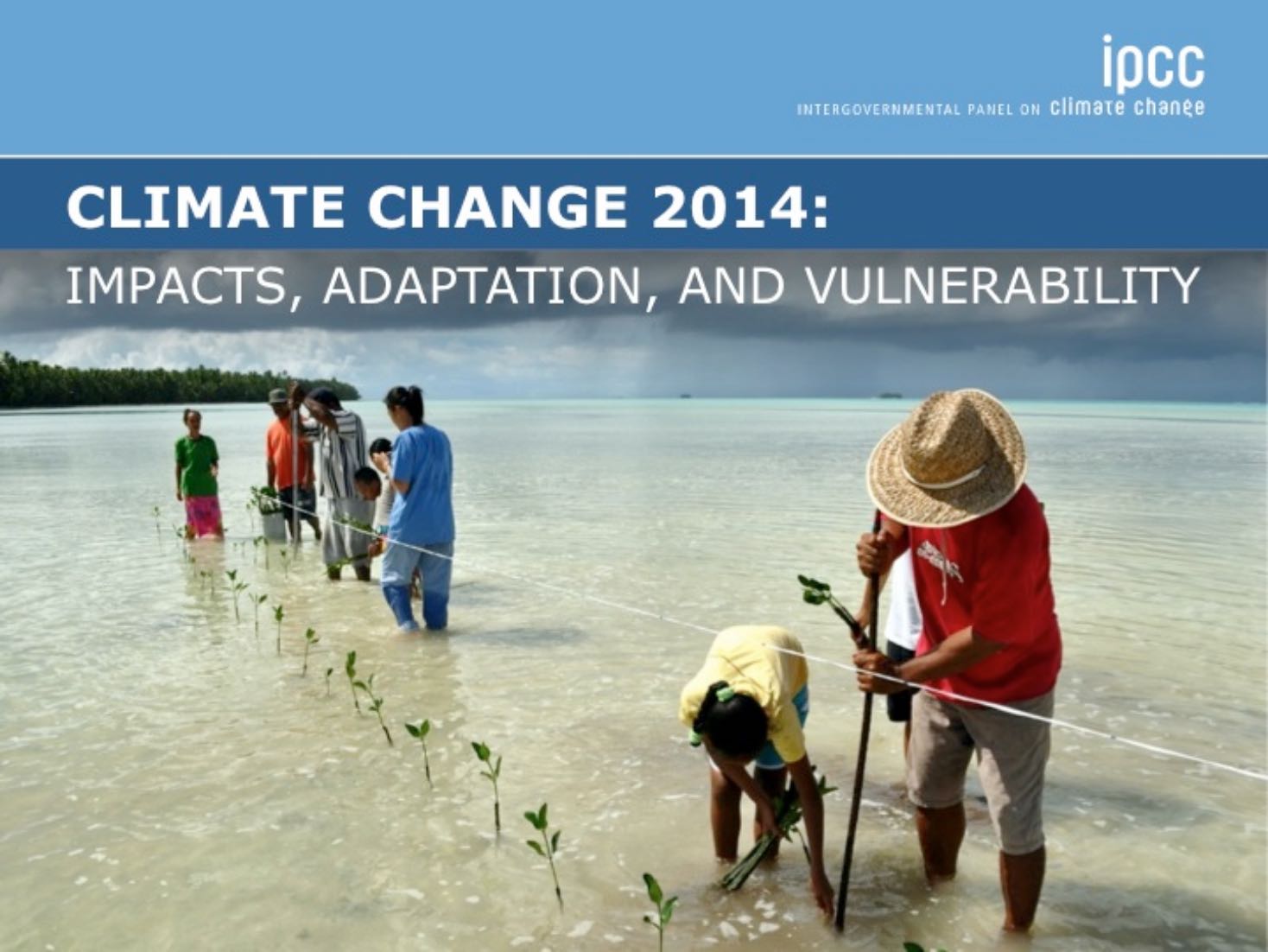AgMIP Papers Cited in IPCC AR5 Working Group II Assessment Report
Apr 9, 2014
The Food Security and Food Production Systems chapter, of the newly released IPCC Working Group II Fifth Assessment Report (AR5), examines how new research since AR4 has changed our understanding of the impacts of climate change on current world food systems, as well as the projections of future impacts on those systems and likely consequences for food security. The IPCC AR5 is approved by governments as the definitive science related to climate change, vulnerability, impacts, and adaptation.
“The Agricultural Model Intercomparison and Improvement Project (AgMIP): Protocols and pilot studies”, by Cynthia Rosenzweig and the AgMIP Principal Investigators and Leaders, published in Agriculture and Forest Meteorology 2013, outlines the scope, methods, and goals of AgMIP and presents results from a prototype AgMIP wheat model intercomparison. AgMIP modeling protocols were applied to an ensemble of 5 different crop models forced using 16 general circulation models (GCMs) from the Third Phase of the Coupled Model Intercomparison Project (CMIP3) to develop projections of the response of wheat yields in Obregón, Mexico, to increasing temperature and carbon dioxide concentrations.

This pilot demonstrates the potential for AgMIP activities to generate a range of outcomes for use by agricultural policy and decision-makers, as well as to further the development of agricultural models. The IPCC AR5 Report emphasizes that systematic multi-model comparisons such as the ones being led by AgMIP are important in quantifying uncertainty and impacts of climate change on agricultural systems.
“Uncertainty in simulating wheat yields under climate change” by Senthold Asseng and colleagues, Nature Climate Change 2013, was cited in the “Assessing Impacts, Vulnerabilities, and Risks” section as well. This study brings together 27 different wheat models for rigorous testing at 4 different sites, and presents the largest standardized crop model intercomparison for climate change impacts to date. By using an ensemble model approach, researchers are improving the accuracy of the simulations of observed crop yields compared to individual crop models. The IPCC highlighted this and similar studies as critical to understanding the sources of uncertainty in agricultural assessments.
Two papers were cited from the recent AgMIP special issue (2013) of Agriculture Economics: by Christoph Müller and colleagues “Projecting Future Crop Productivity for Global Economic Modeling”, and by Gerald Nelson and colleagues “Agriculture and climate change in global scenarios: Why don’t the models agree?” These studies are the result of the AgMIP Global Economics Modeling Group intercomparison of ten leading global economic models with the objective of identifying the factors that lead to differing model outputs with respect to a number of future trends, including climate. These linked studies contribute to understanding how the range of greenhouse gas emissions, climate model and global crop model projections, and economic model differences are vitally important to accurately project how food prices will be impacted by climate change. Müller et al.’s contribution was cited in Chapter 7 in a discussion of interannual crop yield variability. The paper examined four different climate change scenarios with the greatest impacts from climate change (high emissions, no carbon dioxide fertilization, no changes in management). The results showed a 10-38% decrease in yields with large uncertainty.
“Climate change impact uncertainties for maize in Panama: Farm information, climate projections, and yield sensitivities” published by Alex Ruane and colleagues in Agriculture and Forest Meteorology (2013) was cited in the IPCC Food chapter’s “Assessing Impacts, Vulnerabilities, and Risks” section as an example of new methods to reduce uncertainty in assessments, as well as the primary study for Panamanian crop impacts in IPCC Chapter 27 (“Central and South America”). In addition to assessing yield impacts, this study demonstrated how addressing multi-disciplinary uncertainties and identifying farm-level information could reduce uncertainties in climate impact assessments on agricultural production.
AgMIP also contributed to Chapter 19 of the IPCC Working Group II Report, “Emergent Risks and Key Vulnerabilities”, with citation of Franziska Piontek and colleagues’ paper “Multisectoral climate impact hotspots in a warming world” Proceedings of the National Academy of Sciences 2013. Piontek et al. examined climate hotspots where impacts from multiple sectors overlap to increase a region’s vulnerability to climate change. The IPCC report indicates that these types of assessments can be a useful “starting point” for regional vulnerability studies and the development of different types of adaptation strategies.
